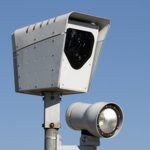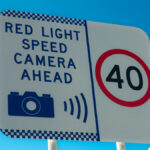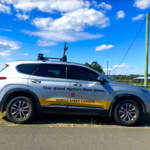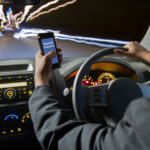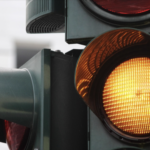Which Offences Can Be Captured By Traffic Enforcement Cameras?
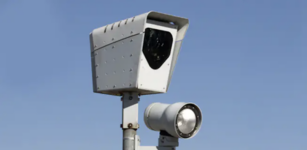
Traffic enforcement cameras seem to be everywhere on our roads these days, whether in the form of red light cameras, fixed or mobile speed cameras, combined red-light speed cameras, mobile phone detection cameras or bus lane cameras.
And while these cameras have different functions and capabilities, they are all meant to serve the same general purposes: to make our roads safer by detecting and thereby deterring the commission of traffic offences in New South Wales.
Traffic enforcement cameras are capable of detecting a range of traffic offences, including exceeding the speed limit, failing to stop before a red light, using a mobile phone while driving, not wearing a seatbelt properly or at all, unauthorised driving in a bus lane and even driving whilst unregistered or uninsured.
Butt efore we elaborate on traffic enforcement cameras and what each are able to detect, it may be helpful to contextualise the framework in which they are used.
Road Rules Across Australia
It is important to be aware that while most traffic rules are consistent across each Australian state and territory, there are differences between the rules themselves as well as the penalties that apply and the way those penalties are enforced.
The same applies to traffic enforcement cameras – while they generally detect the same types of offences across the nation, there are subtle differences in the way traffic offences are detected and the manner of enforcement.
What Types of Traffic Cameras Are There?
There are many types of cameras used to detect traffic offences on our roads.
Fixed cameras operate 24/7 without the need to be supervised, while mobile speed detection cameras are used for shorter periods and require a person to be present to monitor their use.
Mobile Speed Cameras
Mobile enforcement cameras are those placed in vehicles at the side of the road. These cameras can detect speeding offences as well as driving an unregistered or uninsured vehicle.
Unlike fixed speed or red light cameras, mobile speed cameras can be moved to different locations to monitor various areas of the road network in which their use is approved.
Fixed Speed Cameras
Fixed speed cameras are, as the name suggests, stationary cameras that are permanently installed in specific locations, typically at areas where there are high risks of accident. These cameras operate independently without the need for supervision by law enforcement officers and can detect speeding violations and unlicensed driving.
How Speed Cameras Operate
Fixed digital speed cameras use electronic sensors within the road to measure the passing vehicle’s speed. The digital image of the vehicle is recorded electronically, and the licence plate is stored. Other digital images of the incident can include:
- The time and date of the offence.
- Speed of the vehicle.
- Location details.
- Other security details.
Digital speed cameras in New South Wales are tested and monitored by the Qualified Transport for NSW to ensure they are correctly calibrated and tested at regular intervals.
Red Light Cameras
On the other hand, red light cameras are positioned at traffic lights in areas prone to collisions. These cameras are triggered by vehicles running red lights or speeding through intersections regardless of the traffic signal colour.
They capture the offence, licence plate information, and timestamp, functioning continuously without human monitoring. Those falling foul of the rules can expect to receive fines by mail after the camera flashes brightly upon detecting a violation.
Road Safety Cameras
Road safety cameras target offences such as not wearing a seat belt properly and can even be used to prosecute drivers for driving an unregistered / uninsured vehicle, and lesser known traffic offences such as driving without hands on the wheel. These cameras use AI to capture images of drivers, passengers, and licence plates.
Images without any violations are deleted within 72 hours, but if an offence is detected, a fine will be issued to the driver. Speeding is the most common offence captured by these cameras, typically placed in high-risk areas to discourage speeding and prevent accidents.
What Offences Can Cameras Catch While You Are Driving?
When a camera captures you committing an offence, the consequences will vary depending on your state, the type of licence you hold, and the severity of the offence.
Typically, you will be issued a fine and may receive demerit points based on the offence you have committed. In more severe cases, you may even face the possibility of losing your licence.
Learner drivers who commit an offence on camera may incur specific penalties.
Speeding Offences
For instance, if a mobile camera captures a learner driver speeding, they will likely receive a fine and gain demerit points. In New South Wales (NSW), exceeding the speed limit by 10 km/h on a learner’s permit can result in a fine of $124 and 4 demerit points. These penalties increase depending on how much the driver exceeds the speed limit.
If a learner driver accumulates four or more demerit points in NSW, their learner’s permit is suspended. This means they will only be allowed to drive once the suspension period is over, usually at least three months.
Running a Red Light
Drivers often run red lights quickly, accelerating through an orange light before the light turns red. Typically, red light cameras flash if the car has crossed the white line after the indicator has changed to red.
Not Wearing a Seatbelt
Each state takes a different approach to seat belt offences, but the general consensus is that all passengers must wear seat belts correctly. Failing to do so can result in significant fines for both the driver and the passengers.
Using a Mobile Phone While Driving
Mobile phone detection cameras are said to have the ability to detect a driver operating a vehicle while using a mobile phone up to a kilometre away through the use of smart technology. Unlike speed cameras, there is no legal requirements for drivers to be warned on approaching these cameras.
Bus Lane Cameras
And finally, bus lane cameras can identify number plates that are not authorised to drive or ride in a bus lane.
Need Traffic Law Advice?
If you require assistance with an allegation of a traffic offence, call our experienced team of traffic lawyers anytime on (02) 9261 8881 for expert advice about your situation, your options and the best way forward.
We offer a free first appointment to those who are going to court for a traffic offences.

